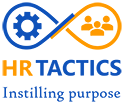Making Interviews Interactive

As millennials and Gen Z make their way up the workforce, the approach to the workplace and the interview has changed drastically. Candidates are not merely focused on their pay packages but want their place of work to provide them with better experiences and room for professional and personal growth. In this scenario, the interview process needs to change and adapt to accommodate the changing dynamics of the recruitment marketplace.
The Interaction
Gone are the days when employers had the upper hand in choosing the candidates and interview processes were usually a one-sided Q&A session. The candidates are evaluating the company as much as the company is gauging their talent. So, the interview process should be more like an interaction where both are sharing information on what they bring to the table. The interview is a chance for the company to create a great impression through storytelling and show the candidate how they are a conducive workplace. On the other hand, the candidate can discuss their values and experiences to demonstrate how they are a good fit for the company.
Bringing the Human Element
It is the responsibility of the interviewer to make the candidate comfortable and ensure that they feel at ease to share information rather than feeling intimidated. Many employers adopt a non-traditional approach to achieve this by getting out of the conference room. It is not uncommon to conduct an interview in an informal or semi-formal setting like over coffee or lunch. This can enable candidates to communicate freely and not feel pressured or anxious. Such informal settings are also a great way to have an open conversation which can reveal more about a person compared to the rigid settings of interview rooms. For the candidate, it is a way to connect with the interviewer and get an insight into what the organization has to offer.
These days the challenge is bringing the human element to virtual interviews. The lack of face-to-face interactions demands a more creative approach. To bring the same level of connection, it is essential to stay in touch with candidates and keep interacting with them through various mediums throughout the recruitment process. This can include sharing updates about the company, reading material to prepare them for interviews and learn more about the organization, interactions with various levels of employees to understand the company’s culture, etc. This enables the candidates to experience positive interactions and knows that the company values their success as much as their own.
Flexibility
Empathy is a big factor that candidates are looking for in an employer. Right from scheduling the interview to the entire process, each step is a clue into what a company stands for. It is important to understand the challenges that a candidate might have and meet them in the middle. Companies need to respect the time of the candidate as well and consult them before scheduling an interview. Interviewers should also have the flexibility to conduct a virtual interview or choose a location convenient for the candidate if need be. This demonstrates that the company is willing to go the extra mile to accommodate a valuable candidate. On the other hand, companies don’t lose out on great talent due to such conflicts that can easily be addressed.
Conclusion
While companies have a structured hiring process, they can always stay true to this while bringing in creativity and innovation in the way interviews are conducted. Today, the candidates need to know that they are valuable to the company and that their growth will be taken care of by an employer. A candidate can learn about the company’s products and services even from external sources like websites. So an interview should be utilized as an opportunity to showcase the culture and values of the company. This is what will ultimately matter to a candidate. In my experience, I have seen candidates willing to change their area of expertise to join an organization, solely due to the interaction with interviewers. If a company can create a real impression, they can successfully engage real talent. Showing that your company is the right fit for talent, will also help in onboarding new employees as candidates will be willing to participate and wholeheartedly support the growth of the company.
